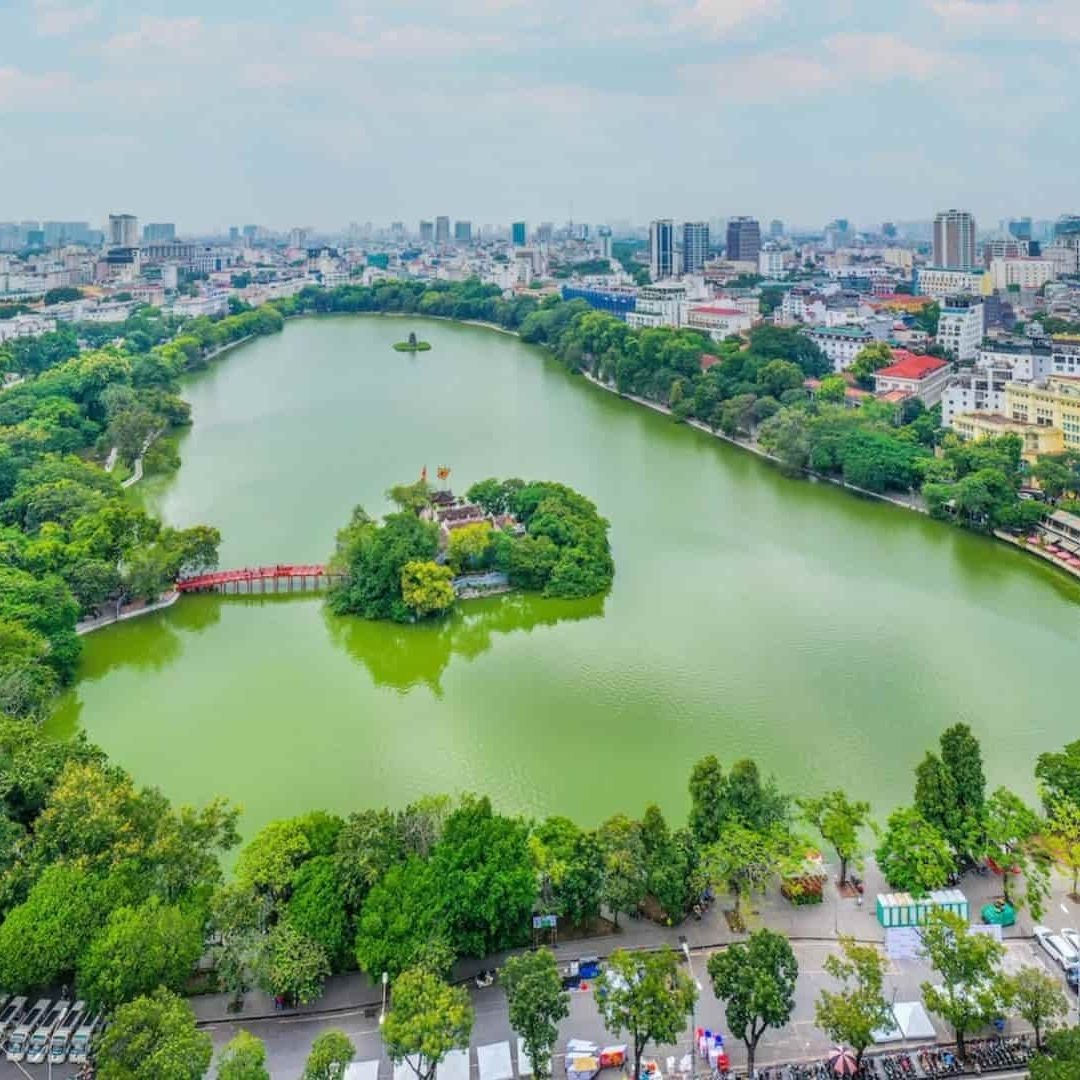Hanoi
It is the capital since the reunification of North Vietnam and South Vietnam in 1976, as well as the second largest city in the country after Ho Chi Minh. It is located in the northern part of the country. In October 2010, 1,000 years since the establishment of the city were officially commemorated. It is a city rich in history, with the streets of its labyrinthine old town dating back to the 14th century. Its industry stands out in the economic section, which includes the manufacture of tools, chemicals and crafts. In Hanoi you can find many vestiges of human habitation from the late Paleolithic and early Mesolithic. It has recently experienced a rapid construction boom, skyscrapers, appearing in new urban areas, have dramatically changed the urban landscape and formed a modern skyline outside the old city. In 2015, it ranked 39th on the list of cities in the world with the most skyscrapers over 100 meters; The tallest being the Hanoi Landmark 72 Tower (336 meters) and the Hanoi Lotte Center (272 meters), where a spectacular terrace is located that has been decorated with Vondom furniture. It is a city that is being revitalized with modern cafes, world-class restaurants, sophisticated bars and cool art galleries. It is the largest education center in the entire country, and it is estimated that 62% of all its scientists are living and working in the city.
Among its tourist attractions we highlight:
- Thang Long Imperial City: Built in the year 1010, it was the place where many Vietnamese dynasties built their palaces to govern the country. The walled enclosure was made up of palaces, fortresses, the current citadel and a forbidden city that served as the private residence of the emperors. One of the few original buildings that remain in the complex is the North Gate or Chinh Bac Mon, one of the 4 entrances to enter the old Imperial City, its construction dates back to 1802. The most important building preserved in foot is the Flag Tower, 33 meters high, it is one of the symbols of Hanoi, it was built in 1812 when the capital had already moved to Hue, so it is not considered part of the original complex. It is well known for its architectural heritage. It was declared a World Heritage Site by UNESCO in 2010. Its size and style are similar to those of the Forbidden City in Beijing. Its royal palaces and most of its structures were left in various states of disrepair in the late 19th century with the upheaval of the French conquest of Hanoi. In the 20th century many of the remaining structures were demolished. Remains of the imperial city were discovered on the site of the former Ba Dình City Hall when the structure was demolished in 2008 to make way for a new Parliament building. Several archaeological remains discovered were taken to the National Museum where they are exhibited. So far only a small part of Thang Long has been excavated.
- Ho Chi Minh Mausoleum: This imposing construction was built between 1973 and 1975 to house the embalmed body of Vietnam's greatest political leader, Ho Chi Minh.
- One Pillar Pagoda: This wooden Buddhist pagoda was built in the middle of a lotus pond on a single stone pillar by Emperor Ly Thai To in 1049.
- Hanoi Opera House: Built in At the beginning of the 20th century, this colonial building is the largest theater in Vietnam. After almost 100 years of operation, the Opera House was carefully refurbished in 1997 and equipped with state-of-the-art facilities. Today, the place attracts renowned artists, productions and musicians.
- St. Joseph's Cathedral: Known as Hanoi Cathedral, it is built on the site of the Bao Thien Tower, the capital's most famous monument during the Ly dynasty. The architect was inspired by the Notre Dame de Paris Cathedral. Inside and around, you can see many Vietnamese faithful and newlyweds taking romantic photos.
- National Museum of History of Vietnam: It was acquired by the Government of Vietnam in 1958 and was formally opened to the public on September 3 of the same year. It is located at the back of the Hanoi Opera House. It has exhibits ranging from the prehistory of Vietnam (about 300,000 to 400,000 years ago) to the August Revolution of 1945 and the founding of the Democratic Republic of Vietnam.
- Temple of Literature: It was built in 1070 by the then king Ly Thanh Tong in honor of Confucius and although there are several Van Mieu (Confucian academic complexes) throughout Vietnam, this is the most famous of all.
Programs at Hanoi

Exotic Vietnam

Super Vietnam

Landscapes and ethnicities of Vietnam

Super Vietnam and Cambodia

Northern Vietnam
What to see in Hanoi?
Ho Chi Minh Mausoleum
One Pillar Pagoda
Temple of Literature
